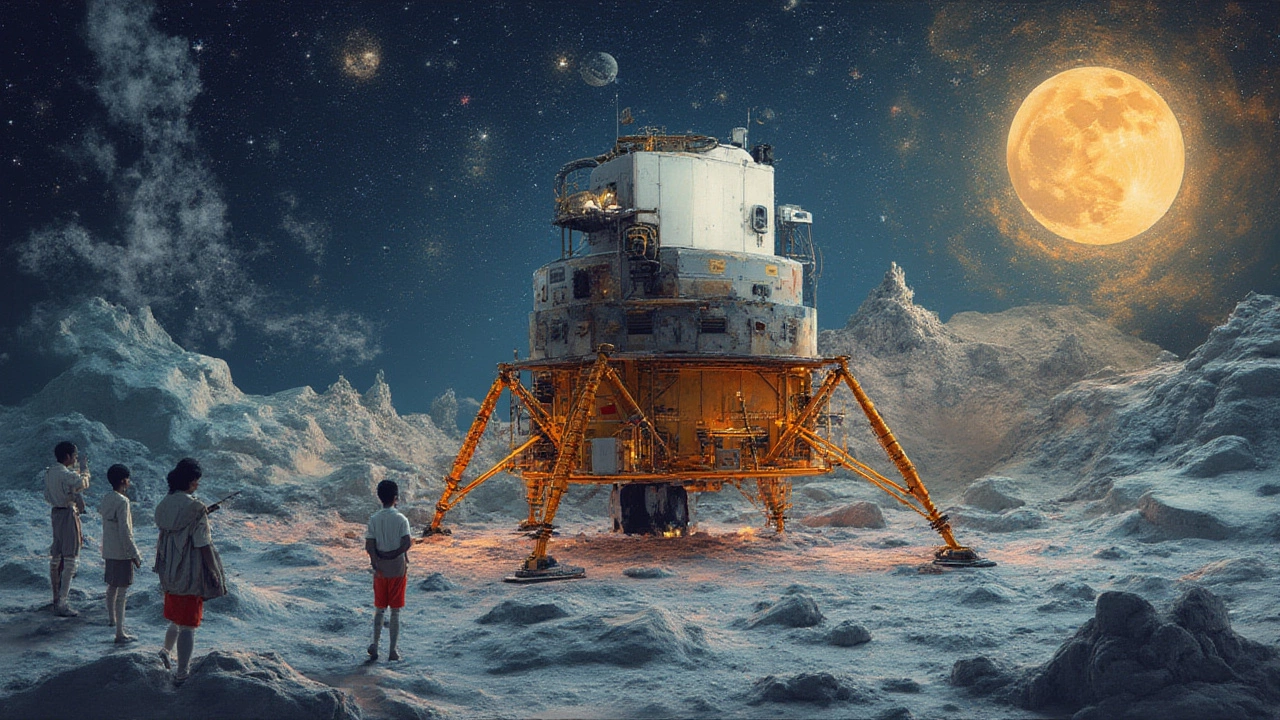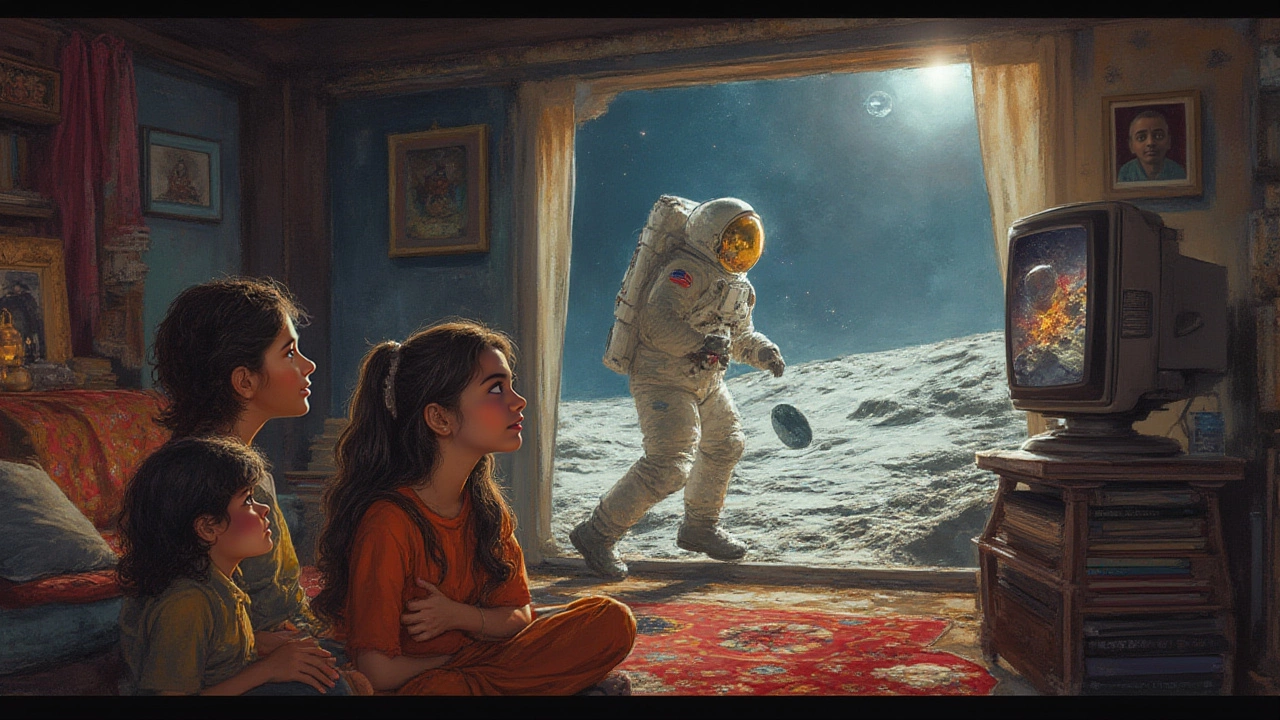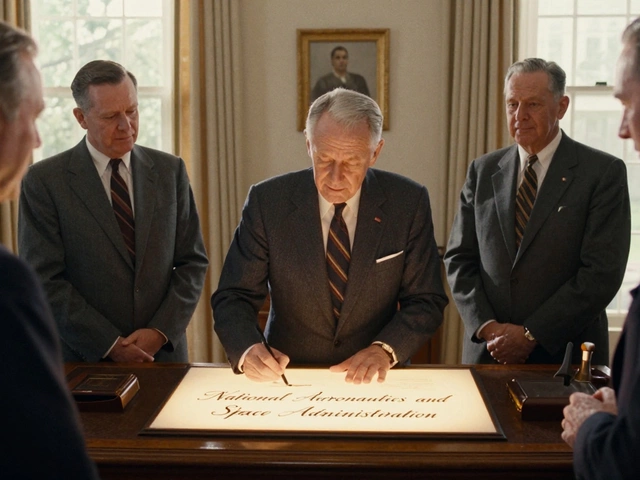Can you picture leaving everything behind on Earth and flying 384,000 kilometers to a place where no human has ever set foot? Fifty-six years ago, that wild dream became real as the world watched, eyes glued to grainy TV screens, holding their breath. Forget sci-fi movie drama—this was the real deal, with actual humans risking their necks for science, pride, and the urge to push boundaries most of us can't even wrap our heads around. The Moon, a timeless subject of poetry and crazy stories, suddenly became a place for footprints. But whose?
The Space Race Heats Up: Context Behind the Moon Mission
The first half of the 20th century was defined by wars, inventions, and a rivalry that went straight to the stars. The United States and the Soviet Union pretty much ran the show, eager to prove who was smarter, stronger, and more daring. So it wasn't just about launching satellites—this competition was about planting your flag on the Moon for the world to see. The Soviets actually scored several "firsts" in space: putting Sputnik in orbit in 1957, launching Yuri Gagarin as the first human in space in 1961, and sending Luna 2 to crash-land on the Moon. Many expected they'd win the ultimate race as well.
But when President John F. Kennedy made that famous promise in 1961—"before this decade is out, of landing a man on the Moon and returning him safely to the Earth"—it set off a frenzy. Scientists, engineers, astronauts, and countless others worked late into the night, years on end, working out everything from rocket fuel formulas to how to pee in zero gravity. By 1969, the U.S. was close. Apollo 11 was the carefully calculated moonshot everyone was watching.
If you ever wanted to see what stubborn ambition and teamwork can accomplish in just eight years, this is your story. That push sparked incredible technology, not just in rockets but in computers, food, and even the dust-busting vacuum cleaner (seriously, look it up!). Every single piece matter—there were more than 5.6 million parts in the Saturn V rocket alone. Each one had to work perfectly or the crew could die. The stakes were sky-high.
Apollo 11’s Crew: Who Were the Moonwalkers?
So who were the three guys NASA handpicked to maybe die on the Moon? These men were experts in flying, engineering, and even keeping cool under pressure. In July 1969, Apollo 11's crew was Neil Armstrong (commander), Edwin "Buzz" Aldrin (lunar module pilot), and Michael Collins (command module pilot). All three had impressive resumes—test pilots, experienced astronauts, steely nerves—but only two would actually touch the Moon’s surface.
Nobody was more aware of the risk than they were. There was a 1 in 6 chance they wouldn’t survive the trip. Richard Nixon’s speechwriter even wrote a memo called “In Event of Moon Disaster,” just in case they didn’t make it back. Yet they trusted the years of NASA training and a bit of luck. The command module, Columbia, had to stay in lunar orbit, which was Michael Collins’s lonely job. Aldrin and Armstrong would be the ones to ride down in the lunar module, nicknamed Eagle. Fun fact—not everything worked as planned. The Eagle’s computer alarms went off just as they neared landing. Armstrong grabbed manual controls, dodging dangerous rocks, and landed with only 25 seconds of fuel left. Imagine how tense that must have been, hearing the alarm blaring in your headset, knowing one mistake meant instant doom.
After landing, Armstrong and Aldrin went through an excruciating checklist. No jumping out right away—not until they were sure they could actually get back home. They checked the gear, tested the suits, and waited for the green light. Meanwhile, Michael Collins orbited above, out of radio contact for almost half each orbit, with no one but static and his own thoughts for company.

The Historic First Steps: Who Went to the Moon First?
Now for the question that’s stumped plenty of late-night arguments: who actually set foot first on the Moon? The answer is Neil Armstrong. Just after 10:56 p.m. Eastern Daylight Time on July 20, 1969, live on TV and radio, Armstrong carefully climbed down the ladder, paused, and made that famous line: “That’s one small step for man, one giant leap for mankind.” The static in the audio muddled things up, but his words became legendary. Aldrin followed shortly after—only about 19 minutes later, but that gap would live forever in history books.
The world was locked in. Even Chennai’s streets stood still as radio crackled across India. Two men in bulky suits played lunar tag for 21 hours and 36 minutes—collecting rocks, setting up experiments, snapping legendary photos, and bouncing around in the light gravity. Armstrong and Aldrin planted the American flag, set up a retroreflector (so scientists on Earth could bounce laser beams off the Moon), and scooped up about 21.5 kilograms of lunar samples.
Think about their suits—each had 21 layers of ultra-thin fabric, like foldable armor. The computers guiding them had less processing power than a modern calculator. The cost? Over $25 billion, which would be more than $150 billion today. But perhaps the strangest part: footprints are still up there. No wind or rain will ever wash those prints away. That’s immortality in the muscles of two men, for billions to see.
What Did the Moon Landing Change?
Landing on the Moon wasn’t just a flex. It genuinely changed life on Earth. For one, the technology spun off in wild directions. From freeze-dried food to improved heart monitors, inventions first designed for the Apollo program have become part of everyday life. Engineers accidentally pushed computing ahead by a decade, forced to shrink computers to fit on spacecraft. The mission also forced surgeons to invent better medical sensors and tools, which later showed up in hospitals everywhere.
Political impact? Massive. The Moon landing made the U.S. a science superpower and signaled to the world that humans were ready to solve impossible problems. NASA’s open sharing of data, even with rivals, set a friendly tone that lives on in global science collaboration. The landing also got millions of kids worldwide talking about science, engineering, and big dreams. You can draw a straight line from Apollo to satellites powering Google Maps, weather predictions, and those juicy images from Mars rovers. Don’t forget the emotional effect: astronauts describing Earth from space as a “blue marble” inspired the early environmental movement back home.
Of course, conspiracies followed. Despite overwhelming evidence, a handful of skeptics still insist it was all filmed on a Hollywood set. But look up at the Moon with a backyard telescope: if you know where to look, you can spot the landers and reflectors. Those leftovers aren’t going anywhere.

Surprising Facts and Enduring Lessons
Think you know the story by heart? Here are some surprising nuggets. Armstrong almost didn’t become “first.” The hatch placement in the lunar module made it easier for him, so luck picked for him. After their walk, the astronauts found Moon dust was gritty and got everywhere—even sneaking through their suits’ airtight seals, stinking up the air with a smell like spent gunpowder. Lesser known: Aldrin held a private, silent communion with a wafer and wine right after landing—though NASA kept it quiet at the time.
The schedule was brutal. The astronauts were supposed to nap after landing before stepping out, but who can sleep before the greatest walk in human history? Backup crews rehearsed every move on Earth—the “silver suit” team spent years practicing every flip, switch, and emergency scenario. Still, the unknown haunted everyone. Armstrong later admitted he gave the landing itself a 50-50 chance.
Curious how far they traveled on the Moon? About 60 meters, tops. No moon buggies until later missions. They left behind a little silicon disk with goodwill messages from 73 countries, a U.S. flag, several science instruments, and—yes—some equipment they didn’t want to haul back, including, oddly, a golden olive branch.
If you’re looking for a bit of trivia, here's a quick data snapshot in a table:
| Mission | Date | First Man on Moon | Time on Lunar Surface | Samples Collected |
|---|---|---|---|---|
| Apollo 11 | July 20, 1969 | Neil Armstrong | 21 hours 36 minutes | 21.5 kg |
If you’re ever in doubt about who went first, just think: Armstrong’s steps are still quiet, rising above the dust, thanks to a mix of history, politics, genius, and luck. And every time someone dares to try something impossible, you can bet they’re following those very tracks.





